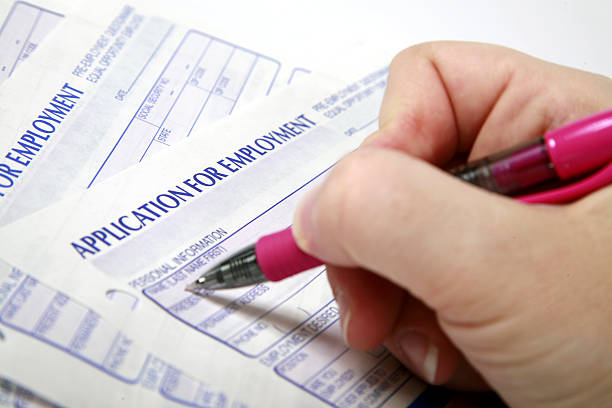Immigration
Visa Canada Work 2023: How to Apply
If you wish to work abroad in 2023, Canada is a good place to start.
With so many labor shortages in the market, Canada is always willing to welcome foreign nationals to contribute their abilities and experience to occupations that cannot be filled by permanent residents or Canadian citizens.
Applying for a Canadian work visa is one way to start this trip, but first, you must decide which one is best for you.
You must apply for a Canadian work visa if you are qualified to do both.
Work permits are classified into two types: open work permits and employer-specific work permits.
Continue reading to find out how you can join the thousands of newcomers who have made Canada their home.

How to Apply for Visa Canada Work
Step 1: Research Various Work Visas
You can apply for two types of work permits, which all depend on the type of job you have.
These job offers provide both an open Canadian work permit and an employee-specific work permit.
An open work permit allows you to work for any Canadian employer, whereas a particular work permit allows you to work just for the employer listed on your work permit, which includes your name, the licensing term, and the location of your job.
The International Experience Class (IEC, sometimes known as a Working Holiday Visa) and the International Mobility Program are two popular open work permit schemes.
A Labour Market Impact Assessment (LMIA) is not necessary for Canada to apply for an open work visa.
There are several work visa streams available under the employer-specific work permit. The work offer received determines the best option for the individual. This work permit requires an LMIA.
Post Graduate Work Permit (PGWP)
The Post Graduate Work Permit (PGWP) was created to assist international students who have earned a postsecondary qualification, such as a certificate, diploma, or degree, and who have graduated from a relevant Canadian Designated Learning Institution (DLI), in living and working in Canada for up to three years.
The processing time for the PGWP in Canada is 80 to 180 days, so applying early is critical.
As an international PGWP student in Canada, you can apply for an open work permit, which will allow you to work for any employer in Canada and gain the work experience required to qualify for permanent residency.
If you can only work for one company, such as a construction worker, an employer-specific work visa is your best option because you can only work for one company and in one province.
International Experience Canada (IEC)
The International Experience Canada (IEC) program allows young people to travel around Canada while working. This program is divided into three sections:
- Working Holiday
- Young Professionals
- International Co-op (Internship)
The working holiday visa is the most common. The working holiday visa is suitable for people who want to work while visiting Canada.
It is valid for 12 to 24 months, depending on how long you intend to stay in your home country.
This permit is only available to citizens of the 35 countries with which Canada has a youth mobility agreement.
Temporary Foreign Worker Program
This program assists many Canadian businesses that need to fill positions that citizens or permanent residents are unable to fill.
When a Canadian company hires a foreign national, they bring new talents and knowledge that would not have been available in Canada, hence the companies must obtain an LMIA for most vocations.
Home Support Worker Pilot
When Canadians and permanent residents are unavailable, the Home Support Worker Pilot allows Canadian families to hire foreign nationals to care for seniors, children, or people with disabilities in their homes.
Employers may require their caretakers to live with them.
Caregivers for people with significant medical needs and caregivers for children are the two sorts of in-home caretakers.
Labour Market Impact Assessment (LMIA)
A Labour Market Impact Assessment (LMIA) is a document issued by Employment and Social Development Canada (ESDC) to analyze the effects of recruiting overseas employees in Canada.
The LMIA’s goal is to guarantee that all Canadians have the best possible quality of life by encouraging a highly trained workforce to improve Canada’s labor market.
Training, Education, Experience, and Responsibilities for Occupations (TEER) and National Occupational Classification (NOC)
When applying for a work visa, you must know and submit your NOC code. Your NOC will be associated with the TEER category.
The TEER category is used to determine the type of education and qualifications needed for the job.
The National Occupational Classification (NOC) is a standardized system in Canada that assigns each current occupation in the Canadian labor market a four-digit number and a job description.
Immigration, Refugees, and Citizenship Canada (IRCC) uses the NOC matrix to assess an immigration applicant’s work experience. The strategy simplifies the process of finding suitable and competent workers to fill positions in Canada.
Step 2: Check Your Eligibility
If you’ve ever thought about migrating to Canada, you’ve probably heard about the requirements for acquiring a Canadian visa.
You must first ascertain whether you are eligible to dwell in the country before applying for a work or permanent visa.
Given that Canada is regarded as the best place to live in the world, followed by Japan and Germany, it stands to reason that the country has extremely specific procedures and legislation that bar anyone who does not meet certain qualifications from entering the country.
Each program has its own set of prerequisites for participation. In most cases, a job offer from a Canadian employer is required to qualify for a work permit in Canada.
If you want to apply for an employer-specific work visa, you must first obtain an LMIA from your Canadian company. Include a copy of your work permit application once it has been approved.
If you are seeking an open work visa, there is no need to do so. If you need an LMIA, you can submit your work permit application after you have one.
When applying for a work visa, you may be able to obtain permits for your spouse and dependent children (under the age of 22) if they are accompanying you to Canada.
This, however, is dependent on the level of employment position supplied to you.
The higher your job, the more probable an open work permit will be issued to your spouse and children.
Unfortunately, the working holiday visa does not fall within this category. Your dependents will be unable to accompany you to Canada.
There are various factors to keep in mind about work visa requirements in general:
You must demonstrate that you will leave Canada before your visa expires, which is determined by the length of your contract.
However, keep in mind that if you get relevant job experience in Canada, you can apply for a permanent visa.
Other special requirements that must be completed while applying for a work permit, aside from the work permit you choose, include:
- Demonstrating that you have sufficient means to care for yourself and your family members while in Canada and when you return home
- Provide evidence of a clean criminal record.
- You must be in good health and have a clean medical exam.
- labor for no employer who is deemed ineligible on the list of employers who fail to comply with Canadian labor conditions.
- Do not endanger Canada’s security.
- Provide the officer with any additional documents requested, such as a passport or travel document, to demonstrate your right to enter the country.
Your application procedure must confirm your eligibility for a specific visa. Taking an evaluation questionnaire and contacting a Regulated Canadian Immigration Consultant (RCIC), a professional in all Canadian immigration matters, is the best approach to ensuring you apply for a suitable visa.
They’ll know which visa you qualify for based on your country of origin, skill, career, and the demand for your occupation in Canada.
Step 3: Obtain the Correct Work Visa
Once you’ve chosen the work permit program to apply for and met all of the requirements, you’re almost ready to submit your application.
Of course, the best way to apply for a Canadian work visa is online, which saves you money on courier fees and eliminates delays in properly submitting your application.
This will also ensure that all documents are uploaded with your application as part of the criteria, enhancing your chances of applying successfully the first time.
The processing period for a work permit in Canada can range from 6 to 33 weeks, which can be reduced with the help of a reliable RCIC that can check your application and advise you if it requires any further information, fields that have not been completed, or other supporting proof.
Contacting an RCIC will help you speed up the application process.
This will assist you in avoiding errors that may compel you to renew and resubmit your Canadian work visa application.
You will also receive a crafted CV with your NOC experience included to help you with your job search.
If you adhere to these three crucial stages, your application for a work visa to Canada will be accepted quickly.
When you are accepted, you will be given a document stating that you are legally permitted to relocate to and work in Canada, which you must present when you arrive.
This letter does not serve as your work permit.
When you arrive in Canada, you will most likely be given a work permit that stipulates the job you can do, the organizations or businesses you can work for, and the location, provinces, or territories where you are permitted to work.
The time you are legally permitted to work.
With the right guidance and assistance during the Canadian work visa application procedure, your dream to migrate to Canada may become a reality and a possibility that leads to permanent residency in the future.
FAQS
Can I add my family to my work permit application?
If you apply for an employer-sponsored work permit, you may be able to bring your spouse and dependent children with you to Canada.
If your children are of school age and in Canada, they are eligible to attend Canadian educational institutions without the need for a special study permit. To work for any employer in Canada, your spouse or partner might be eligible to apply for an open work visa.
What is the price of a work permit in Canada?
An open work permit costs $255 per person, compared to $155 for a closed work permit. If you are renewing a work permit or applying on behalf of a group of performing artists, there will be additional expenses.
How can I get a work permit?
Depending on the kind of work permit needed, there are various application procedures. Choosing the appropriate work permit for you is the first step. Call us if you need help using the application, and a member of our staff will help you schedule a session.
Conclusion
Canada’s work visa possibilities and dynamic job market make it an appealing option for individuals seeking a career in a varied and prospering country.
With careful planning and the proper visa, you can embark on a trip to work and live in one of the world’s most accepting and affluent countries.
We have covered the various types of work visas in Canada and the application procedure in this complete guide.
We hope that this article has given you a clear picture of the opportunities that await you in the Great White North.






